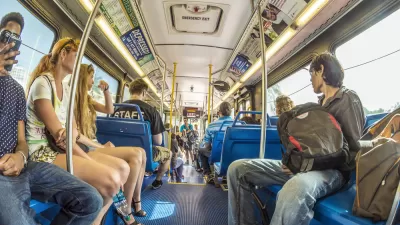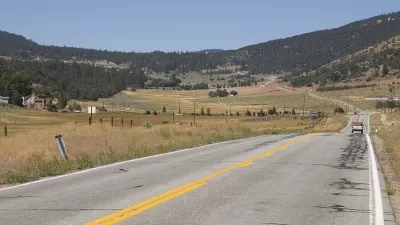Not only are transit systems subsidized, but so are America's roads. While some advocate for the reduction of road subsidies to better incentivize transit use, Josh Barro argues for more effective ways to make mass transit work better.
Barro, writing in City Journal, points out the sometimes conflicting arguments regarding transit subsidies versus those of road subsidies, finding that roads require a much lower subsidy than transit, at ~8% and ~41-55%, respectively. "More important is that the 41-to-55-percent figure is misleading: it refers only to the cost of roads, not to the total cost of driving," says Barro, "[t]hat total cost includes not only public spending on roads but also a host of private purchases-of cars themselves, maintenance, gas, and insurance."
"All told, then, $1.08 trillion was spent on road travel, with government subsidies providing only $83 billion of the total. That's a subsidy of less than 8 percent," writes Barro, who argues against the commonly-held concept that eliminating these subsidies will encourage greater transit use. "An end to road subsidies would raise gasoline prices by about 50 to 60 cents a gallon. Over the last decade, fuel prices rose much more sharply than that, which led to a modest reduction in vehicle-miles traveled, but there hasn't been any sea change in our transportation practices."
Instead, he argues for a drastic change in the way Americans approach planning and zoning. Leveraging the fact that properties near transit increase property values and, therefore, property taxes, Barro believes "[c]ities should allow dense development, collect the property taxes that are generated, and use them to finance transit."
FULL STORY: Autonomy

Alabama: Trump Terminates Settlements for Black Communities Harmed By Raw Sewage
Trump deemed the landmark civil rights agreement “illegal DEI and environmental justice policy.”

Planetizen Federal Action Tracker
A weekly monitor of how Trump’s orders and actions are impacting planners and planning in America.

Why Should We Subsidize Public Transportation?
Many public transit agencies face financial stress due to rising costs, declining fare revenue, and declining subsidies. Transit advocates must provide a strong business case for increasing public transit funding.

Understanding Road Diets
An explainer from Momentum highlights the advantages of reducing vehicle lanes in favor of more bike, transit, and pedestrian infrastructure.

New California Law Regulates Warehouse Pollution
A new law tightens building and emissions regulations for large distribution warehouses to mitigate air pollution and traffic in surrounding communities.

Phoenix Announces Opening Date for Light Rail Extension
The South Central extension will connect South Phoenix to downtown and other major hubs starting on June 7.
Urban Design for Planners 1: Software Tools
This six-course series explores essential urban design concepts using open source software and equips planners with the tools they need to participate fully in the urban design process.
Planning for Universal Design
Learn the tools for implementing Universal Design in planning regulations.
Caltrans
Smith Gee Studio
Institute for Housing and Urban Development Studies (IHS)
City of Grandview
Harvard GSD Executive Education
Toledo-Lucas County Plan Commissions
Salt Lake City
NYU Wagner Graduate School of Public Service





























